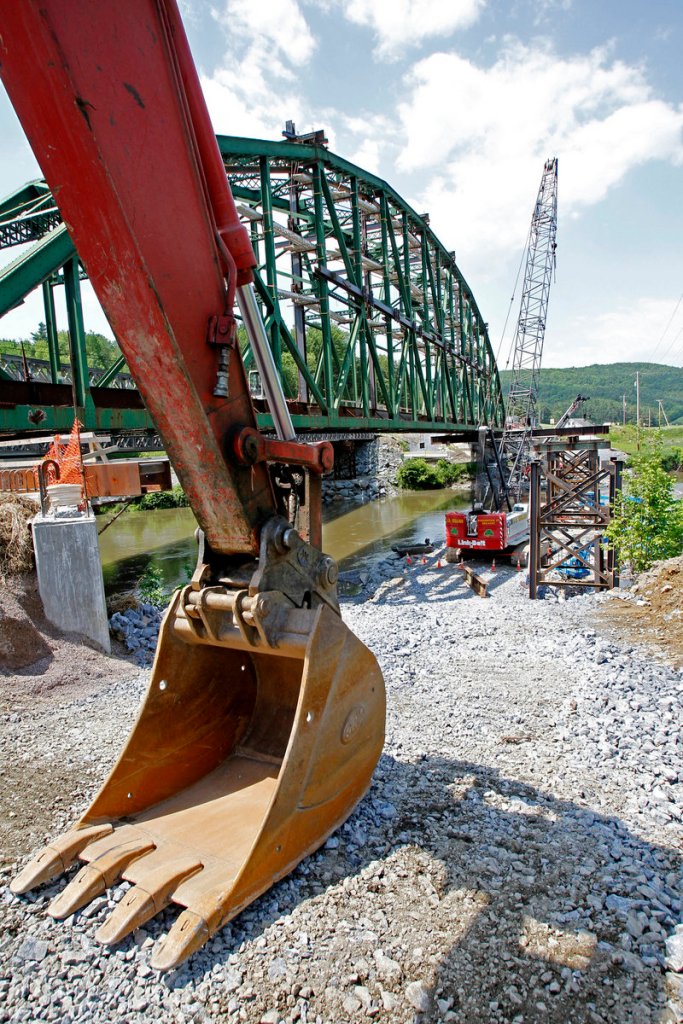MONTPELIER, Vt. – A historic Vermont bridge is going to be updated with a technique that seems like something only a superhero could accomplish: Engineers will cut the 350-foot bridge in two lengthwise, push the two sides apart, widen them and put it back together.
As far as anyone involved in the project has been able to determine, it’s the first time such a technique has been tried on such a large bridge and after 15 months of preparation, engineers are now getting ready to separate the sides, move one 300,000-pound truss 10 feet away from the other and then reattach the sides.
Once the steel and concrete have been added, motorists crossing the bridge won’t have to worry about meeting a truck coming the other way.
The so-called Pennsylvania truss bridge, which carries Route 2 across the Winooski River about 10 miles east of Burlington, was built in 1929, two years after an epic flood washed out a covered bridge there. The bridges are marked by the crisscrossing I-beams that form a latticework that creates a steel canopy above the road surface.
It was marvel of its time, but by the bridge’s 60th birthday in 1989, Vermont officials had recognized that it needed to be modernized. The two travel lanes were a total of 20 feet across, barely wide enough for two cars to pass; there is no shoulder, no room for bicyclists or pedestrians; and the steel and the supports were showing their age.
“I travel that road every day, twice a day,” said Vermont Transportation Structures Project Manager Carolyn Carlson, who started working on the Richmond bridge in 1989. “Driving on it before when it was 20 feet (from) rail to rail, you’d find it very nerve-racking.”
Still, state and federal officials wanted to keep the historic look of the bridge — three such bridges are left in the state and this is the only one on a major road. It took decades to decide on the unusual course of action.
The project’s cost, an estimated $16 million, is more than double that of building a new bridge. At first, officials were reluctant to undertake the more expensive option, but as time went on it became clear it could work.
“When you are dealing with a historic resource, you don’t look at it as extra money,” said Scott Newman, the historic preservation officer for the Vermont Agency of Transportation.
Two federal laws require that the significance of historic structures be taken into account when planning transportation projects as long as the alternative is “prudent and feasible,” Newman said.
“The bar for establishing whether something is prudent or feasible is very high,” he said. “There’s a thumb on the scale in favor of the preservation of the resource. We are very careful about that.”
Send questions/comments to the editors.



Success. Please wait for the page to reload. If the page does not reload within 5 seconds, please refresh the page.
Enter your email and password to access comments.
Hi, to comment on stories you must . This profile is in addition to your subscription and website login.
Already have a commenting profile? .
Invalid username/password.
Please check your email to confirm and complete your registration.
Only subscribers are eligible to post comments. Please subscribe or login first for digital access. Here’s why.
Use the form below to reset your password. When you've submitted your account email, we will send an email with a reset code.